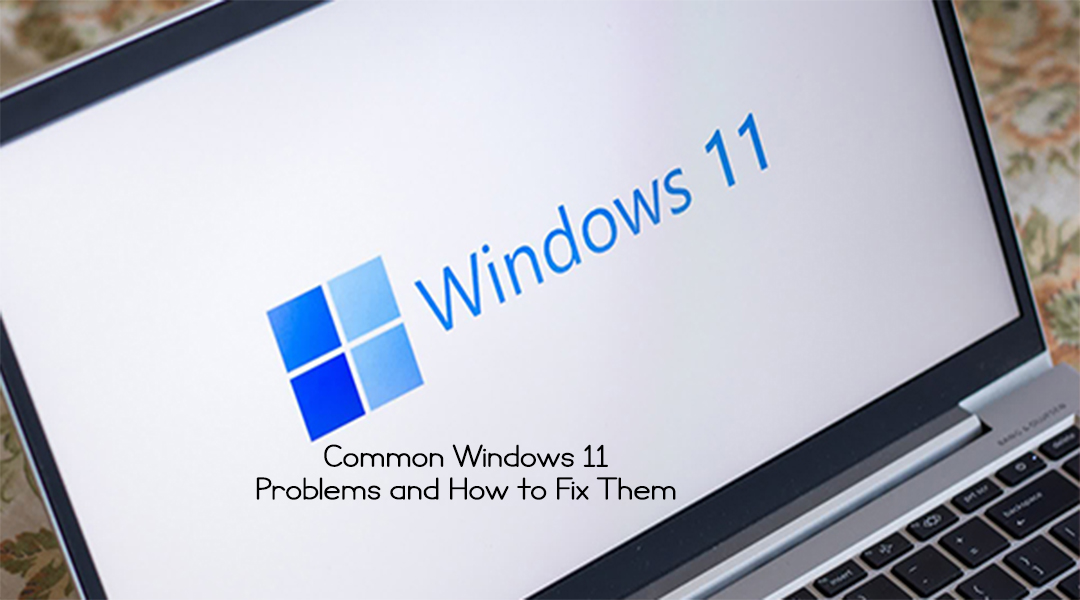How do you fix common windows 11 problems? If you’re experiencing Windows 11 problems after installing the new operating system, this page should help you get your PC running again.

Windows 11 is officially out, and early adopters are already reporting some bugs and issues with the next generation of Windows.
If you find your PC is encountering problems with Windows 11, try the solutions on this page. As Windows 11 has only just launched, we’ll be monitoring the rollout, and if any big issues emerge, we’ll try to find the solution and update this guide.
Common Windows 11 Problems and How to Fix Them
Even though the company has finalized the development earlier to spend more time tweaking and fixing bugs and other problems before the official release date, the new version includes many code changes that could mean many unknown issues, compatibility problems with hardware and drivers, and more.
While many of these issues should get sorted out pretty quickly by Microsoft if you encounter one it doesn’t matter how soon a fix might come you want to know what’s going wrong with your PC, and how to deal with it.
Microsoft Won’t Let You Upgrade to Windows 11
Even though Windows 11 launched on October 5, that doesn’t mean you’ll have an easy time installing it. Microsoft has set some pretty steep Windows 11 system requirements, and if your PC doesn’t meet them you’ll hit a wall when trying to install Windows 11 or upgrade to it from Windows 10. Here’s what you need:
- CPU: 1 gigahertz (GHz) or faster with 2 or more cores on a compatible 64-bit processor or System on a Chip (SoC)
- RAM: 4GB
- Storage: 64GB or larger
- System firmware: UEFI, Secure Boot capable
- TPM: Trusted Platform Module (TPM) version 2.0
- Graphics card: Compatible with DirectX 12 or later with WDDM 2.0 driver
- Display: High definition (720p) display that is greater than 9” diagonally, 8 bits per color channel
- Internet: Windows 11 Home edition requires internet connectivity and a Microsoft account to complete device setup on first use.
Above are the lists of requirements your PC must have to be qualified for an upgrade.
Check Windows 11 Compatibility
In case your system meets the above-mentioned criteria, you need to run a health check to keep your system ready to install Windows 11.
- To run the health check you need to first download and install Microsoft’s PC Health Check app
- Once installed, run the program
- Click on the blue-colored “Check Now” button on the Windows 11 banner
- If your system is compatible, you’ll get a pop-up stating “This PC will run Windows 11″
To check your windows 11 compatibility follow the steps above.
Windows 11 and TPM
In case Microsoft’s Windows 11 upgrade checker tells you that your PC isn’t supported but it meets all the other requirements then you need to check your BIOS to enable TPM. Almost every modern CPU comes with TPM support.
In case you have an Intel CPU then you need to switch to TPM and for AMD you need to check PSP fTPM in the BIOS. Once done, you can run Microsoft’s health checker app to confirm the status. This should allow Windows 11 to install. You can check the status of TPM support in your PC by doing the following:
- Press Windows key + R
- When the box appears, type tpm.msc to open the Trusted Platform Module Management window
- Look for a sub-window titled TPM Manufacturer Information and check under Specification Version to see what TPM version your device has
With the above steps, you can easily check the status of TPM support in your PC.



